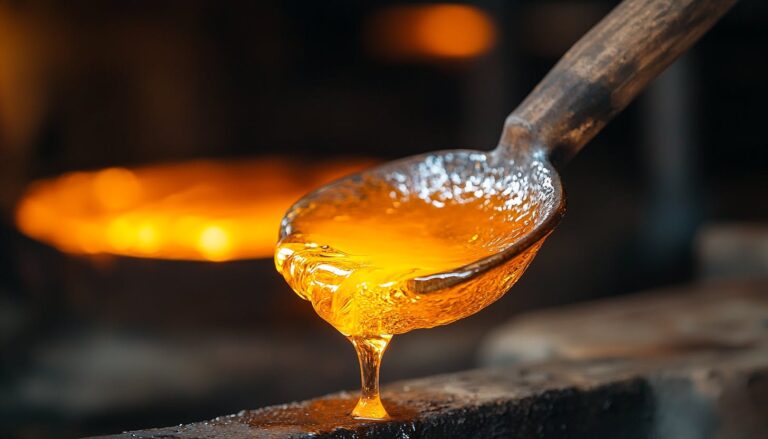Contact us now, we are always here for service
Ameri glass bottles, Since 1968. Your custom glass containers & stock glass container items wholesale specialist. Our customer service is always online 24/7/365.
Follow Us:
The Ultimate Guide to Glass Melting Point: From Chemistry to Manufacturing
2024-10-25 16:01:21Table of Contents
Glass is one of the most versatile materials used in both industrial and everyday settings, from delicate sculptures to architectural structures – and knowing its melting point is crucial in taking full advantage of it! In this comprehensive guide we delve deep into its mysteries while explaining their science as well as uncovering how these influences shape manufacturing processes.

What Is Glass Melting Point?
Glass melting points refer to the temperatures at which solid glass transitions into liquid form; usually between 1,400-1,600 degrees Celsius depending on its type. In contrast to crystalline materials which typically exhibit precise melting temperatures, which have precise melting temperatures; glass is an amorphous solid which softens over a range of temperatures rather than abruptly melting, therefore understanding this gradual softening behavior is vital both scientifically and commercially.
Factors Affecting Melting Point of Glass
Multiple factors can impact the melting temperature of glass. These include:
1. Chemical Composition
2. Impurities and Additives
3. Pressure and Atmosphere
4. Heating Rate and Duration
5. Thermal History
6. Crystallization
Glass Melting Point vs Transition Temperature
One source of confusion when working with glass materials can be the difference between its melting point and transition temperature (Tg). While melting refers to when liquid becomes viscous, Tg refers to where solid becomes rubbery-soft like rubbery-solid. While Tg tends to be lower than melting points for processes like glass annealing and tempering. Knowing both terms thoroughly will assist any glass worker or scientist working in these fields.
Phases Glass Goes Through During the Melting Process
Glass melting is not an instantaneous event but instead involves several distinct phases:
1.Initial Heating
Glass absorbs heat slowly at first, leading to minor structural modifications before reaching Softening Point and becoming completely malleable.
2. Softening Point
As temperatures increase, glass eventually reaches its softening point where it begins to deform but does not fully liquefy.
3. Viscosity Changes
Between this stage and full melting temperatures, viscosity decreases steadily allowing it to be easily formed or stretched for use as desired.
4.Complete Melting
At higher temperatures, glass melts completely to a fully fluid state that allows it to flow freely; this phase is essential in manufacturing processes like casting or extrusion.
How Can You Determine Glass Melting Temperature
Accurate measurement of melting temperature is vital in both research and industrial settings. There are various techniques used for this, such as:
·Differential Thermal Analysis (DTA)
DTA measures heat flow into material as it’s heated, helping pinpoint its melting point with precision.
·Viscosity Methods
Examining how glass flows at different temperatures helps us identify when it has reached a fully liquid state.
Importance of Glass Melting Temperature in Manufacturing
Glass melting temperature plays an integral part in producing top-grade glass containers or windows, so its precise control in production is absolutely vital to ensure consistent quality results from delicate pieces like jewelry or robust windows alike. As part of these techniques such as glassblowing, pressing, or drawing require specific temperature regulation in order to obtain desired outcomes (for instance:). For example:
·Glassblowing requires maintaining an appropriate viscosity when shaping glass
·Pressing requires higher temperatures for accurate molding of the product.
·Drawing(most often in fiber optics applications), drawing requires careful temperature and environmental controls in order to maintain thin structures of uniform thickness throughout.
Based on your application and desired outcome, various techniques are utilized for melting glass:
1. Pot Furnaces
Pot Furnaces are traditional ways of melting glass for small-scale production, where glass is placed into ceramic pots to be heated by direct flame before melting takes place.
2. Induction Heating
This modern method uses electromagnetic fields to melt glass quickly and efficiently, often in industrial settings.
3. Flame Working
For smaller projects, such as glass beads or sculptures, flame working with a torch provides precise control over the melting process.
How Glass Properties Change During Melting Process
As glass melts, its physical properties undergo substantial transformations:
–Viscosity decreases, making the material easier to mold into desired shapes;
–Thermique expansion becomes more pronounced, which must be properly understood to avoid thermal shock or cracking of its structure.
–Stress and strain accumulation during heating and cooling may result in defects, leading to stress-and-strain related defects if improperly managed.
Related Uses of Melting Point
Glass melting points have multiple applications beyond simple manufacturing; examples include:
·Capillary Melting Point Tubes
For use within hospitals and healthcare settings. Laboratory instruments can be used to accurately determine the melting points of various substances
·Tempered Glass
it’s extremely important that its melting point be understood correctly, since controlled heating and cooling increases its strength; knowing its melting point allows proper processing.
·Glass Melting Point for Aluminum
At times, interaction between liquid aluminum and molten glass can play an integral part of casting processes where glass acts as a mold or barrier material.
Conclusion
Melting point of glass is an integral aspect of its manufacturing and quality production processes. In this article we explored factors affecting melting, phases of melting, and precise measurement methods – and for professionals as well as students or hobbyists it provides key knowledge that helps achieve desired properties while also mitigating thermal strain for seamless product excellence.

